FYS 95: Visualizing Immigration
Item set
- Title
- FYS 95: Visualizing Immigration
Items
-
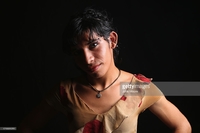 Honduran transgender immigrant Daniela, 20, spends spends time at the Hermanos en el Camino immigrant shelter on August 5, 2013 in Ixtepec, Mexico. She has been staying at the shelter for more than a month while Mexican immigration authorities process documents to allow her to travel to the U.S. border via bus, a much safer alternative than riding the freight trains north, where women and transgender immigrants like Daniela are especially at risk of rape. Thousands of Central American migrants ride atop the trains, known as 'la bestia', or the beast, during their long and perilous journey north through Mexico. Some of the immigrants are robbed and assaulted by gangs who control the train tops, while others fall asleep and tumble down, losing limbs or perishing under the wheels of the trains. Only a fraction of the immigrants who start the journey in Central America will traverse Mexico completely unscathed - and all this before illegally entering the United States and facing the considerable U.S. border security apparatus designed to track, detain and deport them.
Honduran transgender immigrant Daniela, 20, spends spends time at the Hermanos en el Camino immigrant shelter on August 5, 2013 in Ixtepec, Mexico. She has been staying at the shelter for more than a month while Mexican immigration authorities process documents to allow her to travel to the U.S. border via bus, a much safer alternative than riding the freight trains north, where women and transgender immigrants like Daniela are especially at risk of rape. Thousands of Central American migrants ride atop the trains, known as 'la bestia', or the beast, during their long and perilous journey north through Mexico. Some of the immigrants are robbed and assaulted by gangs who control the train tops, while others fall asleep and tumble down, losing limbs or perishing under the wheels of the trains. Only a fraction of the immigrants who start the journey in Central America will traverse Mexico completely unscathed - and all this before illegally entering the United States and facing the considerable U.S. border security apparatus designed to track, detain and deport them. -
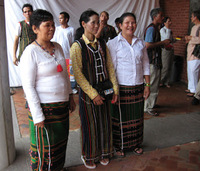 Maintaining the Montagnard culture and traditions once they have immigrated to the United States.
Maintaining the Montagnard culture and traditions once they have immigrated to the United States. -
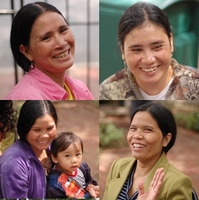 The Montagnard Health Disparities Research Network (MHDRN) is a community-based research partnership designed to create sustainable solutions to problems faced by the Montagnard community in the Triad region.
The Montagnard Health Disparities Research Network (MHDRN) is a community-based research partnership designed to create sustainable solutions to problems faced by the Montagnard community in the Triad region. -
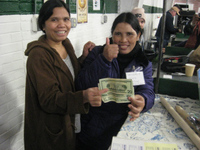 Current population estimates show between 5,000-9,000 Montagnards residing in Greensboro, making them the largest Montagnard community outside of Vietnam.
Current population estimates show between 5,000-9,000 Montagnards residing in Greensboro, making them the largest Montagnard community outside of Vietnam. -
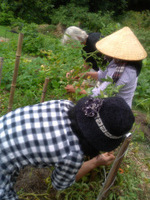 Since 1986, waves of Montagnards, mountain people from the Central Highlands of Vietnam, have been resettled as political refugees in Greensboro, North Carolina.
Since 1986, waves of Montagnards, mountain people from the Central Highlands of Vietnam, have been resettled as political refugees in Greensboro, North Carolina. -
 North Carolina immigrant integration for Montagnards
North Carolina immigrant integration for Montagnards -
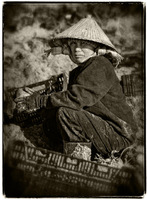 Portraits of Chram Rode and his wife Broih Fnu, a Montagnard couple originally from Viet Nam, now living in Greensboro, North Carolina.
Portraits of Chram Rode and his wife Broih Fnu, a Montagnard couple originally from Viet Nam, now living in Greensboro, North Carolina. -
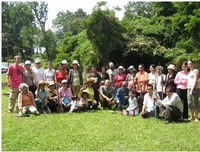
-
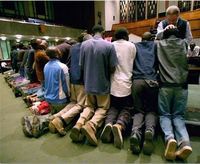 In the image, the bishop of the church prays for the Zimbabweans at the church in Johannesburg. Many Zimbabweans who were fleeing away from the economic crisis found a home at the church. The migrants neither have any other place to go to nor the money to start a new life. They made a decision to start their lives again in an economically stable country, South Africa.
In the image, the bishop of the church prays for the Zimbabweans at the church in Johannesburg. Many Zimbabweans who were fleeing away from the economic crisis found a home at the church. The migrants neither have any other place to go to nor the money to start a new life. They made a decision to start their lives again in an economically stable country, South Africa. -
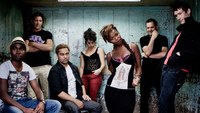 The image shows the group, Freshlyground. The group,based in Johannesburg, is made up of South Africans and Zimbabweans. With the diversity in the group, the group has produced music which is widely accepted across Southern Africa. The band was built on diversity and acceptance leading to its high degree of uniqueness.
The image shows the group, Freshlyground. The group,based in Johannesburg, is made up of South Africans and Zimbabweans. With the diversity in the group, the group has produced music which is widely accepted across Southern Africa. The band was built on diversity and acceptance leading to its high degree of uniqueness. -
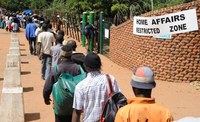 The image shows people at the Home Affairs department in Johannesburg as they attempt to renew their visas. Many people have been deported from South Africa following their visas expiry. However, Zimbabwe's Consular General insisted that South Africa will not resume deportations of Zimbabweans in a bid to dispel growing fears that mass deportations are on the cards.
The image shows people at the Home Affairs department in Johannesburg as they attempt to renew their visas. Many people have been deported from South Africa following their visas expiry. However, Zimbabwe's Consular General insisted that South Africa will not resume deportations of Zimbabweans in a bid to dispel growing fears that mass deportations are on the cards. -
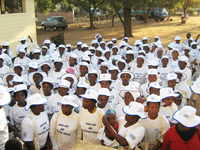 Cross Border Traders are people who migrate across two countries buying and selling goods such as clothes and household essentials. The women shown in the image do the trading as a form of living. The profits they earn in trading help them in surviving each and every day. On the day the image was taken, the women received training around safety when they doing their transactions. The women also got tips on making their trading more efficient. Through the traders, South African economy has grown, as the women buy goods in South Africa. Additionally, the market for taxi drivers has increased as the women commonly use this mode of transport.
Cross Border Traders are people who migrate across two countries buying and selling goods such as clothes and household essentials. The women shown in the image do the trading as a form of living. The profits they earn in trading help them in surviving each and every day. On the day the image was taken, the women received training around safety when they doing their transactions. The women also got tips on making their trading more efficient. Through the traders, South African economy has grown, as the women buy goods in South Africa. Additionally, the market for taxi drivers has increased as the women commonly use this mode of transport. -
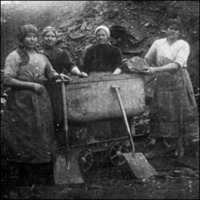 Once a small community Lithuanian immigrants are getting more attention from British people as more Lithuanians immigrate to UK.
Once a small community Lithuanian immigrants are getting more attention from British people as more Lithuanians immigrate to UK. -
 Moses Matenere is one of the young people who have moved to Johannesburg for cheaper and better tertiary education. Interestingly, Moses wants to return home as a doctor after his education in South Africa. He wishes to make Zimbabwe a better place through earning a doctorate degree and working in SA.
Moses Matenere is one of the young people who have moved to Johannesburg for cheaper and better tertiary education. Interestingly, Moses wants to return home as a doctor after his education in South Africa. He wishes to make Zimbabwe a better place through earning a doctorate degree and working in SA. -
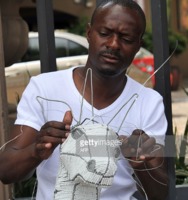 Lenon Tinarwo is an artist. The image shows one of his many artistic works. He is a legal migrant living in Johannesburg. He moved to South Africa because of the existing better economic opportunities. With his great expertise, South Africa provides a great platform for him to showcase his great skills and be appreciated.
Lenon Tinarwo is an artist. The image shows one of his many artistic works. He is a legal migrant living in Johannesburg. He moved to South Africa because of the existing better economic opportunities. With his great expertise, South Africa provides a great platform for him to showcase his great skills and be appreciated. -
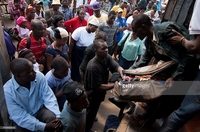 In 2015, there were xenophobia attacks on foreign nationals in South Africa. In fear of losing their lives, many Zimbabweans who were settled in Johannesburg returned home. Despite South Africa having better economic conditions, South Africa was no longer safe. The migrants made the decision to go back home rather than living insecurely in South Africa.
In 2015, there were xenophobia attacks on foreign nationals in South Africa. In fear of losing their lives, many Zimbabweans who were settled in Johannesburg returned home. Despite South Africa having better economic conditions, South Africa was no longer safe. The migrants made the decision to go back home rather than living insecurely in South Africa. -
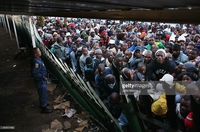 The image was taken in Johannesburg, South Africa. Following the economic crisis in Zimbabwe in 2008, more than 3 million people fled from Zimbabwe to South Africa in pursuit of greener pastures. People are looking to start over their lives in a new land with better economic opportunities.
The image was taken in Johannesburg, South Africa. Following the economic crisis in Zimbabwe in 2008, more than 3 million people fled from Zimbabwe to South Africa in pursuit of greener pastures. People are looking to start over their lives in a new land with better economic opportunities. -

-
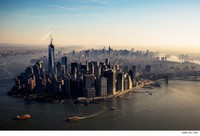 With its spire now officially attached as a permanent structure, One World Trade Center completes the new skyline of New York City.
With its spire now officially attached as a permanent structure, One World Trade Center completes the new skyline of New York City. -
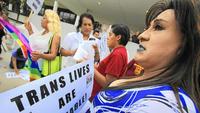 LGBTQ Immigrants in a rally
LGBTQ Immigrants in a rally -
 WAMU Radio news profile
WAMU Radio news profile -
 Syrian Immigrant Child
Syrian Immigrant Child -
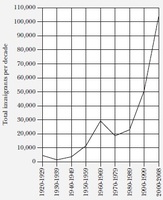 This is a graphical depiction of the increase of immigration from Brazil to the United States.
This is a graphical depiction of the increase of immigration from Brazil to the United States. -
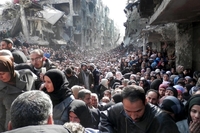 Syrian refugees attempting to enter EU when European countries are putting hurdles in their way
Syrian refugees attempting to enter EU when European countries are putting hurdles in their way -
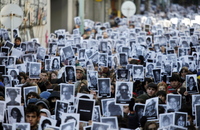 Photo of a march in 2010 to commemorate the 1994 bombing of the 7-story Argentine Israelite Mutual Association building.
Photo of a march in 2010 to commemorate the 1994 bombing of the 7-story Argentine Israelite Mutual Association building.
